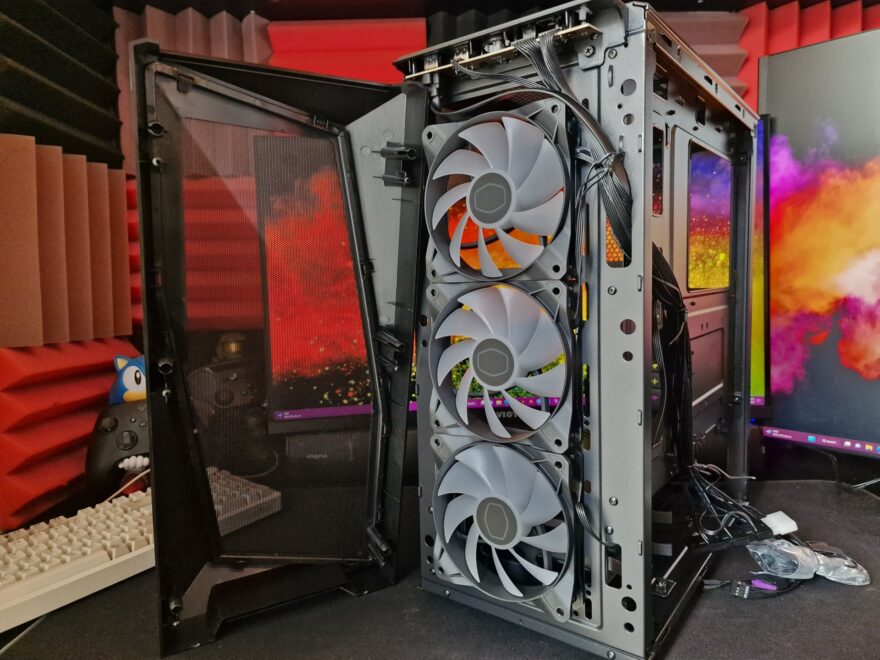Cooler Master CMP 520 PC Case Review
Peter Donnell / 2 years ago
A Closer Look – Interior
The side panel window is easily removed via two thumbscrews at the back. With it placed out of the way, you’ve got loads of easy access to the case interior. There’s a decent amount of room in here too, despite the fact it’s one of the smallest mid-towers in the current Cooler Master lineup.
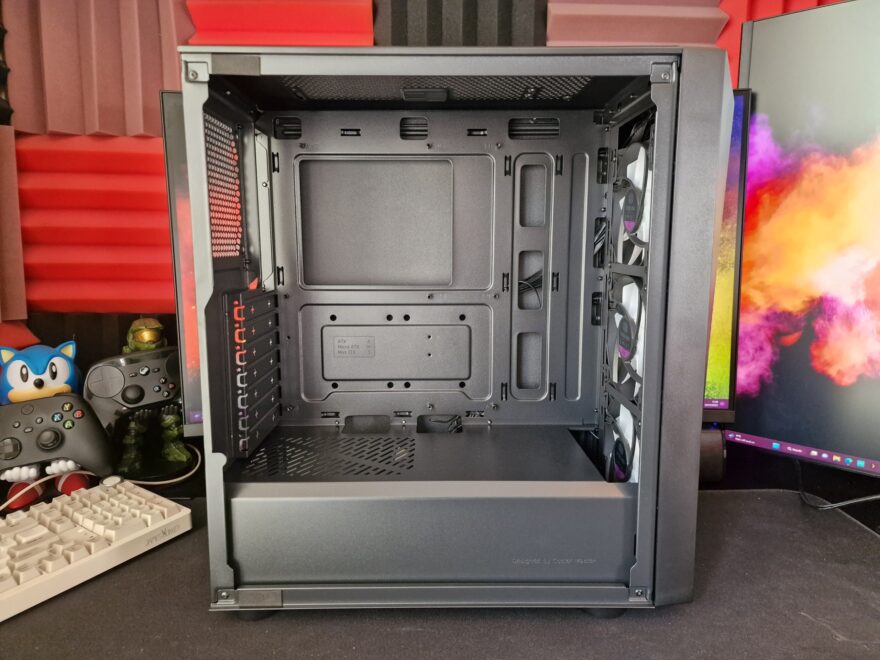
It’s pretty basic here in terms of design, but it’s still ticking all the right boxes for practicality. There are cable routing holes along the top of the motherboard.

More to the right side.
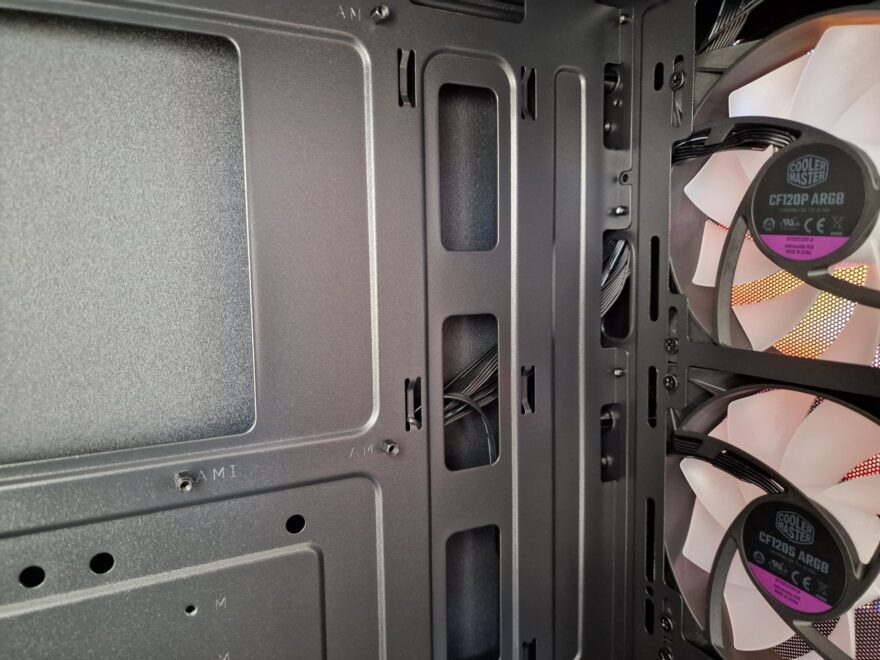
And even some along the bottom. Sure, they’re simple holes in the steel and there are no grommets, but they’ll certainly get the job done. the PSU shroud is built-in and provides you with a cleaner aesthetic, and lots of cable cramming room in the bottom of the case.
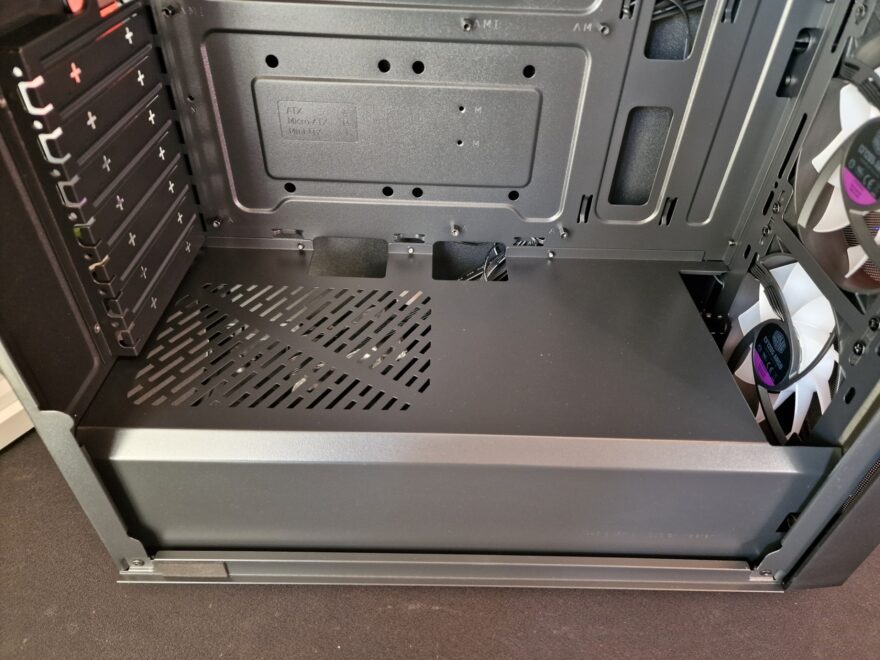
In the front, you’ll find three pre-installed CF120 ARGB fans, giving you a very competent wall of airflow from that mesh front panel. They’re also going to provide a lot of lovely lighting effects. The inclusion of the fans at this price range is likely telling while there are some cost-cutting measures in other parts of the case; I can certainly live with that for some quality fans.
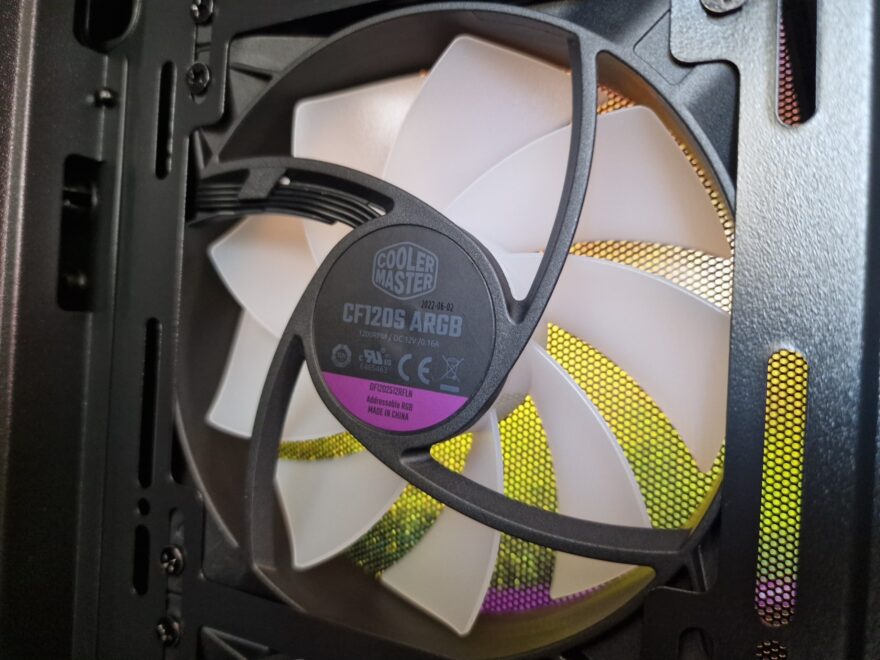
The front of the case will support 120mm, 140mm, 240mm, and 280mm radiators should you wish to change things up a bit. For me though, I’d be more than happy to utilise the air-cooling abilities of this case.
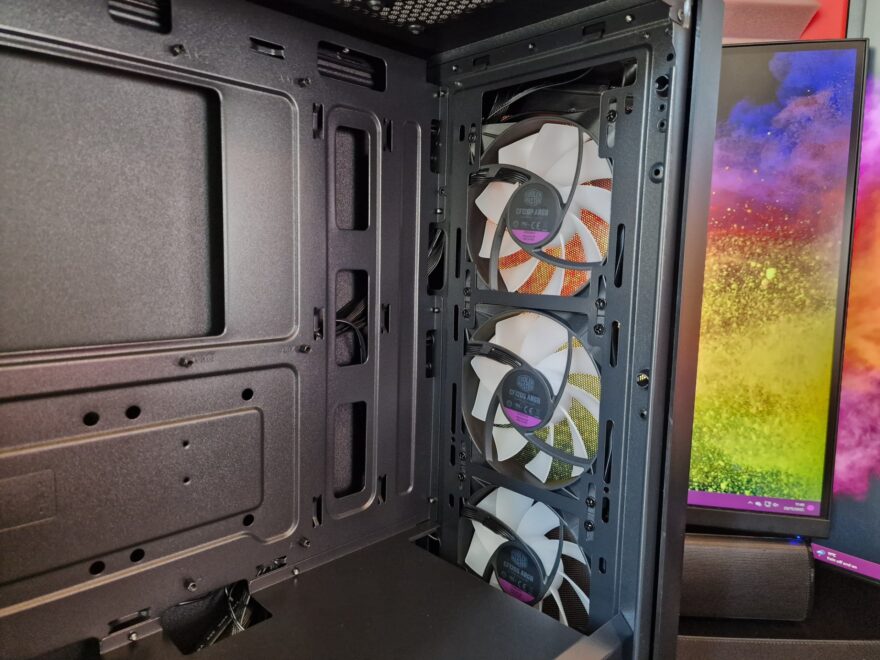
The CMP 520 comes with a pretty decent amount of space behind the motherboard, which should make cable routing a whole lot easier. However, the PSU shroud is going to provide you with plenty of extra space to cram your excess cables, making for an easier build overall.
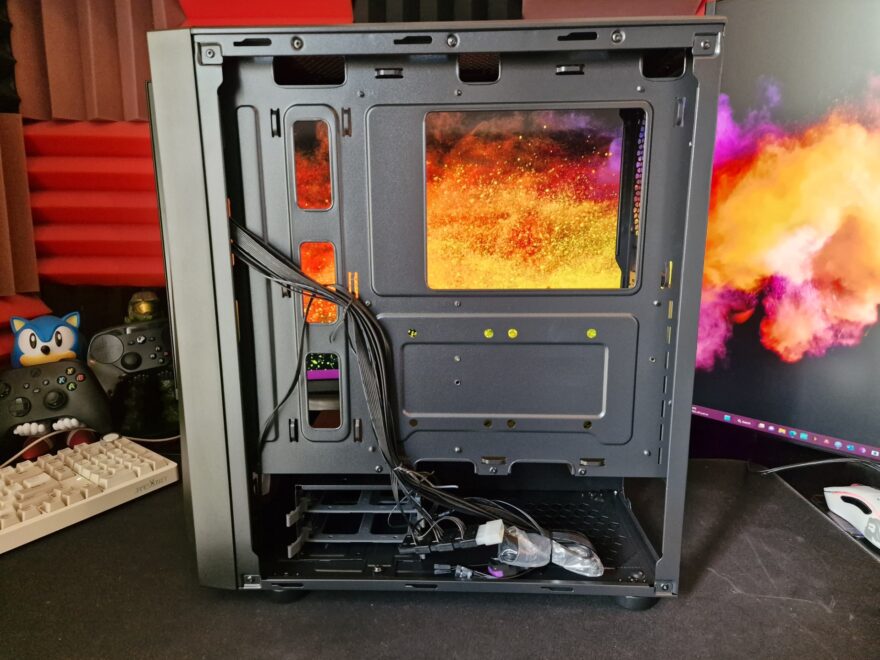
There are cable tie loops dotted around everywhere too, so strapping down cables for a cleaner run shouldn’t be too tricky.
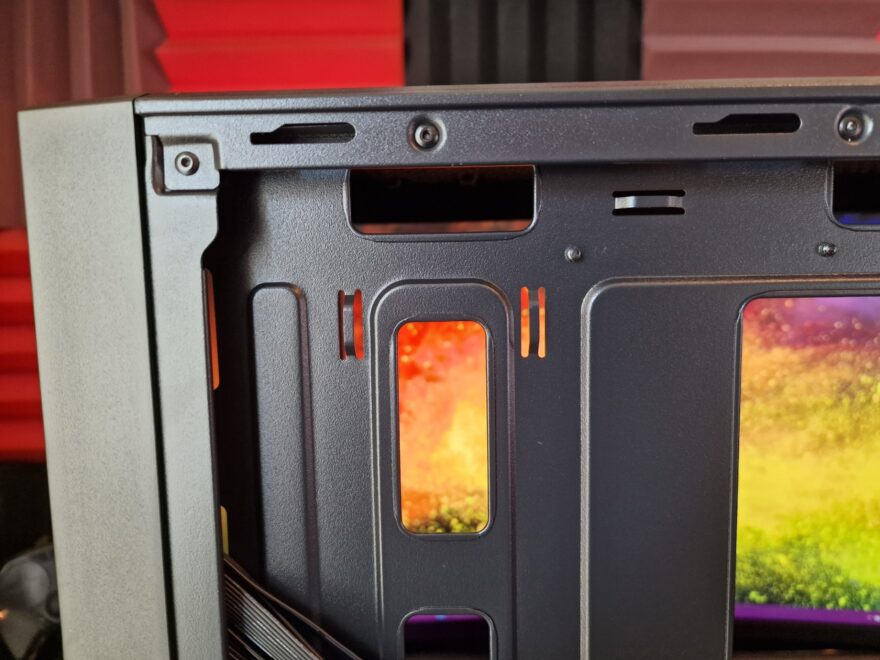
Behind the motherboard, there are two SSD mounts.

Plus, two more drive trays in the bottom of the case, giving you plenty of additional storage space.
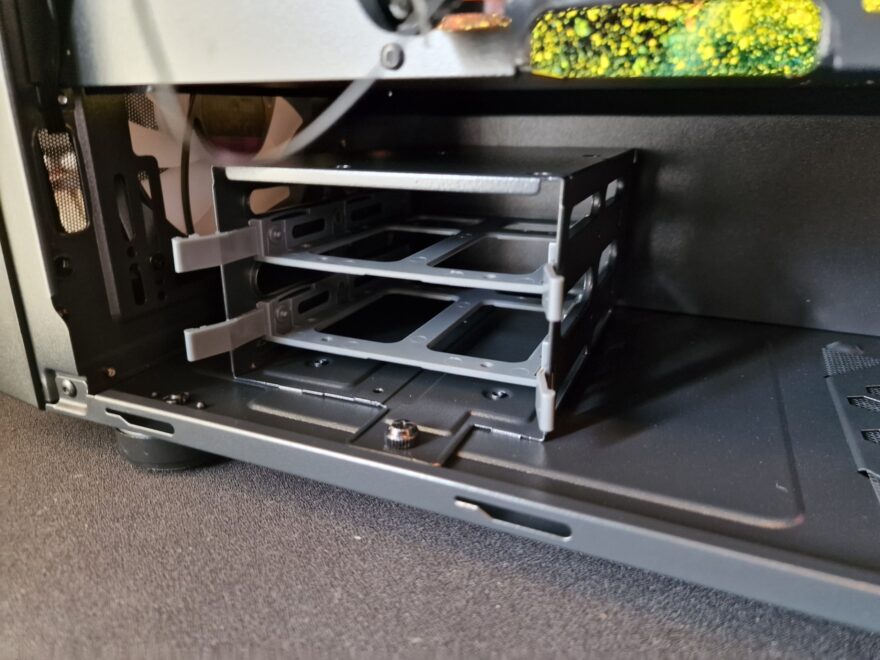
The fans are mounted outside the main section of the case, but behind the front panel, which can be pulled away to access them.
